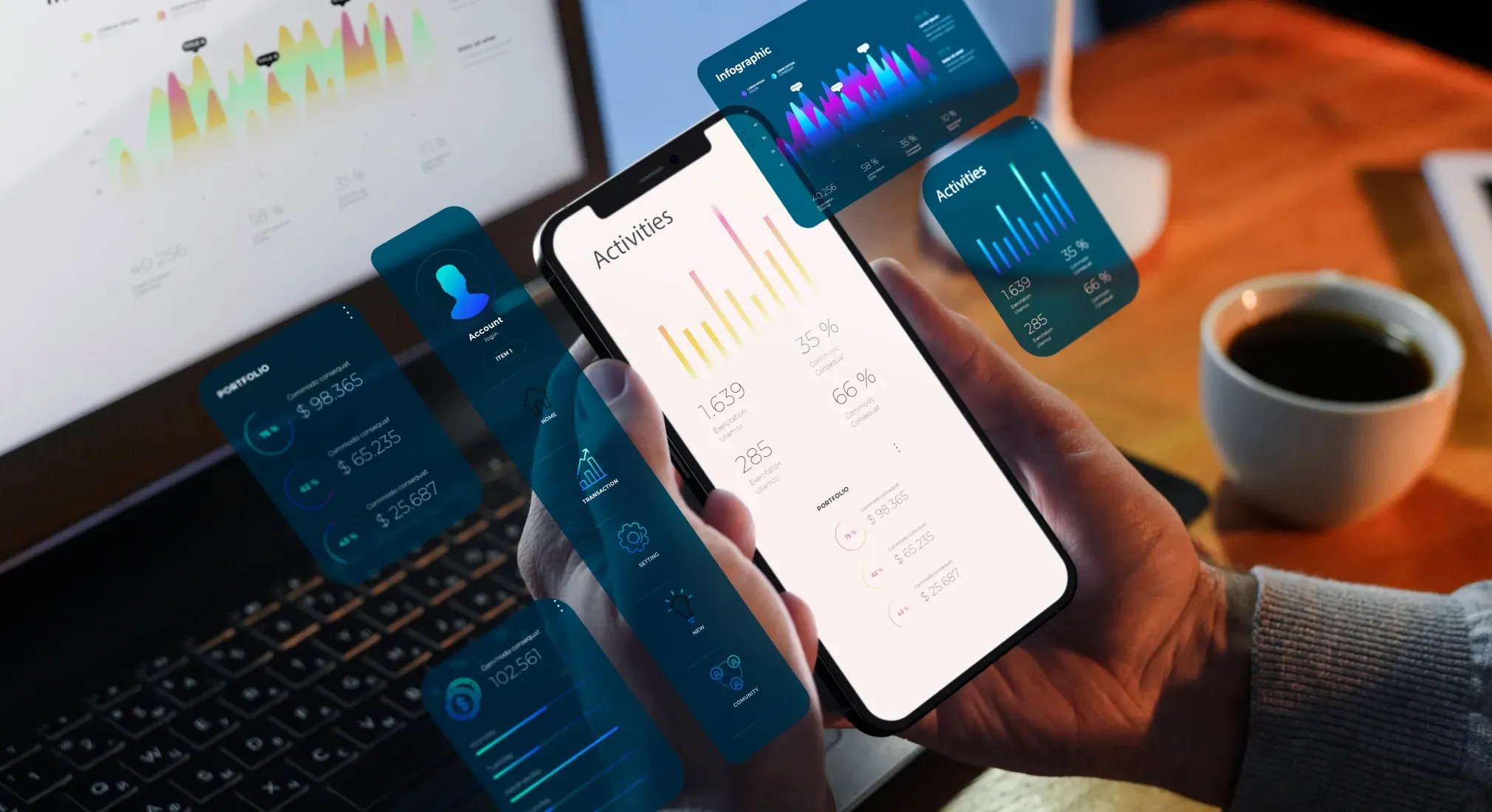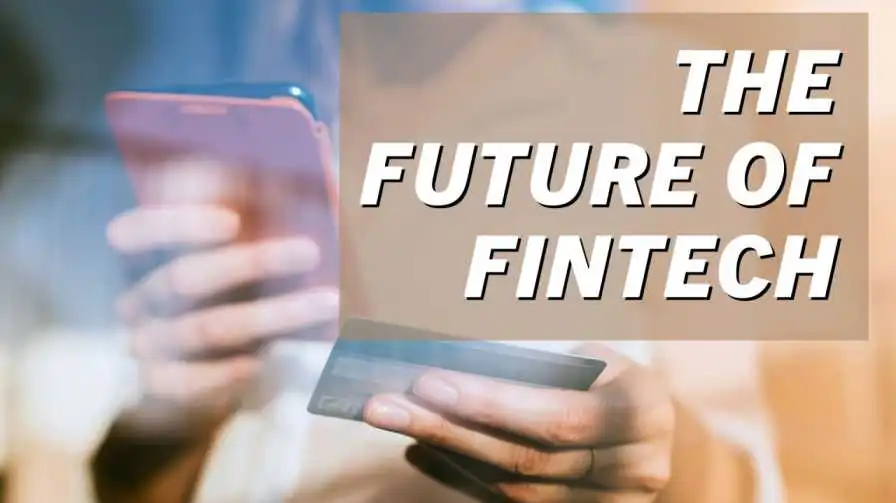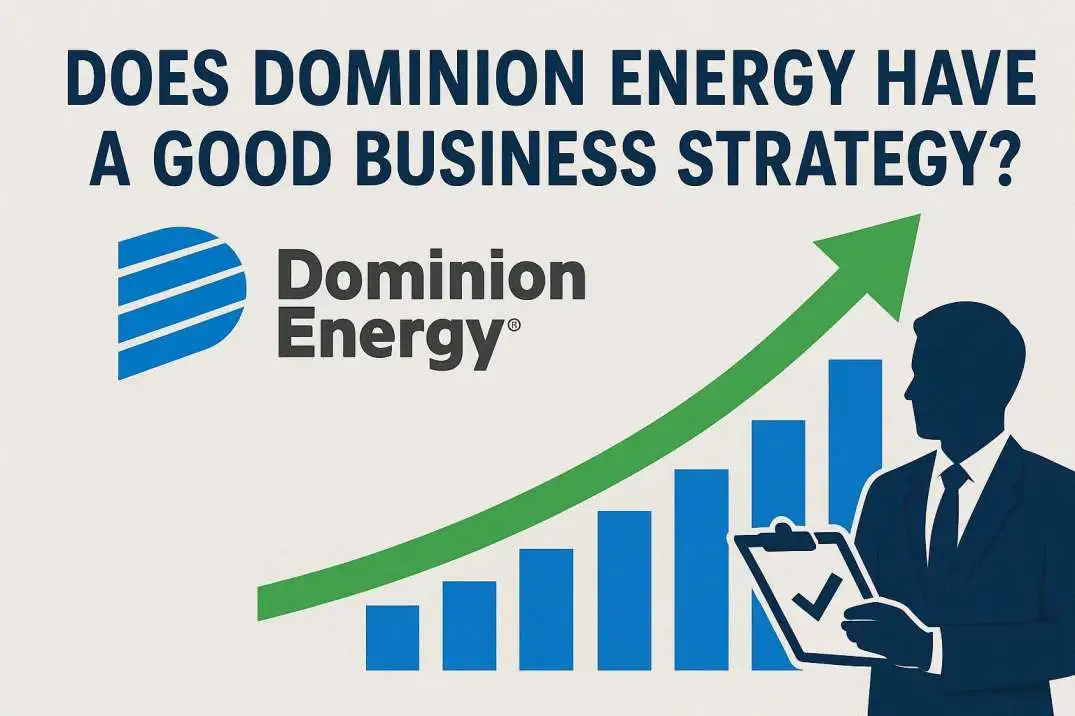In order to retain clients and collect fees from their transactions, businesses in all sectors are keen to incorporate financial services into their apps and products these days. Businesses may gain a competitive edge, increase client loyalty, and access new revenue sources by directly integrating products like lending, investment tools, and mobile payments into their platforms.
By incorporating more digital goods into their core operations and services, banks of all sizes are rethinking their operations. Major investors, including private venture capital, will keep backing financial technology, or fintech, over the course of the next ten years. It is easy to understand why. For the same reason that Willie Sutton, the notorious bank robber of the 1930s, targeted banks, major investors and banks are flooding the fintech space with capital: "because that's where the money is."
We contacted Brigitte Kötting, communications manager, and Joris Hensen, founder and co-lead of Deutsche Bank's (DB) division that oversees its application programming interfaces (APIs), as we examined academic studies and consulting firm reports and further investigated the data on changes in this area to forecast the future of fintech. Through embedded finance—applications that are easily integrated into platforms that consumers frequently use—and fintech in general, they have been assisting their bank, which was established in 1870, in reinventing itself.
Fintech: What Is It?
With the rise of cryptocurrencies, fintech has been changing how we manage, invest, and spend our money—and even what we think of as money. The financial sector is being redefined by this fusion of technology and finance, which provides more affordable and easily available services to both enterprises and consumers.
A few decades ago, when the term "fintech" first appeared, it was usually used to describe technologies that made ATMs and similar devices possible, as well as other backend financial activities. However, in the past ten years, advancements have been much more focused on consumer-facing technology, which have found applications in community NGOs, education, retail purchasing, and fundraising.
Nowadays, most people accomplish this from home instead of having to go to a bank branch to apply for credit or wait in line to transfer money. According to a research by the World Bank, "Fintech is transforming the financial sector landscape rapidly and is blurring the boundaries of both financial firms and the financial sector."
But by the middle of the 2020s, fintech had become synonymous with anything, or worse, anything. Real trends in AI, automated financial planning (robo-advising), banking, cryptocurrency, digital lending, lending marketplaces and crowdfunding platforms, financial e-learning, insurance, money transfers, mortgages, payments, savings and investments, and more become apparent when we look beyond marketing.
Sources of Funding

Venture capitalists account for almost one-third of all equity fintech funding investments made annually; they lend money to start-ups and small enterprises with long-term growth prospects in return for equity stakes. With hundreds of millions of users and extremely successful super-apps, Chinese and Southeast Asian IT companies have had the most success worldwide.
North America, which in 2023 accounted for about half of global fintech sales, is predicted to drop to roughly 40% in that category as a result of that growth. This isn't because North America will stagnate—in fact, companies established there will frequently invest in other regions of the world—but rather because growth in these regions is anticipated to be faster. For instance, over half of Brazilian people currently bank with the fintech Nubank, which will quadruple by 2020.
Thus, there have been notable changes in areas where sizable population groups have traditionally been shut out of the conventional banking system. Financial technologies and mobile banking apps have become commonplace payment options in various fields. With more than a billion users, Tencent Holding's WeChat is only one of the many messaging apps that have developed into providing services like digital banking, social media, and mobile payments globally. Essential services including money transfers, microloans, and access to atypical credit sources are offered by a variety of applications.
It's amazing how many of the improvements in fintech are coming from below, even more so than the efforts of the big American and European banks. However, this shouldn't cause us to jump to conclusions about the "democratization" of finance. The developed world provides a large portion of the investment capital and, thus, the potential profits.
The Prospects for Digital Payments and Banking
Digital payments and mobile banking will probably lead the way in the financial industry of the future. The pandemic brought about a significant change as businesses and consumers looked for remote banking services and contactless payment methods, which have persisted ever since.
The way that consumers and businesses pay each other for goods and services has changed significantly, but business-to-business (B2B) payments have been more complicated. Since many businesses still use paper checks and their payment procedures can be cumbersome and slow, S&P Global refers to this as the "final frontier" for this area of fintech.4 According to their research, controlling cash flow automatically is still a major difficulty, and nearly half of small and medium-sized enterprises believe they rely too much on manual operations.
About two-thirds of all fintech companies worldwide have been in the business-to-business (B2B) market in recent years, thus it is reasonable to assume that new B2B platforms and technologies will be used for far broader purposes.
Additionally, top-down changes are being pushed. Regulators have been intervening to encourage the banking sector to adopt real-time quick payments (with optional antifraud capabilities). FedNow was introduced by the Federal Reserve in 2023, allowing banks and credit unions to make and receive payments for their clients every day in real time.8 The EU's proposal to require rapid payments in the Single Euro Payments Area (SEPA), which have been in use for roughly ten years, might lower the cost of these transactions and further level the playing field between banks and nonbanks in Europe.
Read Alos: Fintech’s Future: AI and Digital Assets
Specific Technology Developments In Banking And Payments Are Listed Below
1. Banking with AI-Native

Perhaps the most revolutionary technology influencing fintech's future is artificial intelligence. According to McKinsey, AI has the potential to boost the global banking sector's yearly income by up to $1 trillion.Six AI is viewed as crucial in fintech in the following ways:
-
Algorithmic fairness and removing AI bias are important issues as AI is utilized more and more for important financial decisions like credit approval. According to Kinsey, methods like federated learning may make it possible to train AI models without centralizing private information. However, the industry still has a lot more work to do because academics have discovered evidence of "digital redlining," which is the replication of offline racial borders through fintech.10 Automation: AI is being evaluated to automate a number of manual financial services activities, including risk underwriting, claim processing, know-your-customer (KYC) and anti-money laundering (AML) checks, and customer onboarding.
-
Conversational banking: AI chatbots and virtual assistants are making it possible for regular banking chores and questions to be answered in natural language and with round-the-clock customer service.
-
Fraud detection: AI is a hot topic when it comes to crime detection. Proponents contend that AI algorithms are more effective than conventional techniques in detecting irregularities and possible fraud because they can evaluate transaction data in real time. Naturally, finance companies are concerned that hackers might utilize AI to target these same systems.4
-
Personalized financial services: By using enormous volumes of customer data to customize financial products and services to each person's preferences, artificial intelligence (AI) may make hyper-personalization possible. This covers proactive money management strategies, individualized insurance plans, and tailored investment guidance.
-
Risk management: Algorithmic trading tactics, fraud detection systems, and credit risk models may all benefit from machine learning. AI can instantly analyze enormous amounts of both structured and unstructured data to find trends that point to increased risk.
-
Predictive analytics: AI techniques may be applied to forecast market trends and address client attrition. Additionally, predictive analytics may improve investment performance, upselling and cross-selling prospects, and employee retention.
-
Fintech's incorporation of AI is not without its difficulties. For the foreseeable future, worries about algorithmic bias, data privacy, and job losses due to AI are probably going to persist.
2. Authentication via Biometrics
Digital payments are made more secure by biometric authentication, such as facial recognition and fingerprints. More widespread use of mobile banking and payment apps may result from this technology's increasing sophistication and usability. Biometrics may resolve identification problems with fintech apps by doing away with the need for passwords and PINs, but they may also introduce privacy concerns.
3. Purchase Now, Pay Later Credit
Since the pandemic, buy now, pay later (BNPL) has been a popular option to short-term borrowing, mostly for online purchases. Among the significant companies that joined this sector in the 2020s were Apple Inc. (AAPL) and Amazon.com Inc. (AMZN). Although BNPL has been there for a while in the United States, the Consumer Financial Protection Bureau (CFPB) estimates that by 2027, there may be three times as many BNPL clients as there were in 2021 (50 million).
Charges to merchants are the foundation of BNPL's economic model, yet late consumer fines can mount up rapidly. Lenders promote BNPL to retailers in an effort to increase sales, which may provide BNPL lenders and their partners with incentives to persuade clients to make larger purchases.
Because BNPL is positioned more as a budgeting tool than a type of credit, the CFPB has expressed worries about overspending and financial harm. The CFPB believes that this is the reason why people who already have credit through other means frequently utilize BNPL. The CFPB has been considering expanding credit card rules to BNPL lenders since 2022.
Guidelines for BNPL lending to community banks were released by the Office of the Comptroller of the Currency in late 2023. These guidelines contained measures to safeguard borrowers against deception and manipulation.13. "Buy now, pay later customers are sometimes misunderstood to have limited access to other types of finance. According to CFPB Director Rohit Chopra, "our analysis shows that these borrowers are more likely to have other forms of credit." "We are working to ensure that borrowers have similar protections and that companies play by similar rules because buy now, pay later is similar to other forms of credit."
4. Wallets on the go
Financial transactions are being redefined as more accessible and secure due to the convenience of mobile banking and payments. For many customers, mobile wallets—like those offered by Apple, Alphabet Inc. (GOOG), and other payment apps—are quickly taking the place of traditional payment methods.
Wallets for trading and storing cryptocurrency are also included in mobile wallets. Well-known mobile wallets, such as Crypto.com Users can exchange digital assets or make payments from their cellphones with DeFi Wallet and Trust Wallet, which support a variety of cryptocurrencies. Users can also engage in lending, staking, and other yield-generating activities thanks to the integration of numerous wallets with decentralized finance platforms.
The data findings for 2023 and Worldpay LLC's projections for payments in 2027 are shown below. Despite the recent hype around cryptocurrency, it's also noteworthy that payments based on cryptocurrency are not included in this list because Worldpay doesn't anticipate that they will account for 1% of all payments worldwide by that time.
5. Banking as a Service (BaaS) and Open Banking
Using Application Programming Interface (API) to initiate payments and securely share client data is made possible by open banking. By gaining access to customers' banking information, fintech startups like Plaid and Tink are able to provide financial services and data analysis. Customers may find this more convenient, but there may be more security dangers for the shared data as well.
With the Revised Payment Services Directive (PSD2) in Europe, the Open Banking law in the United Kingdom, the Consumer Data Right in Australia, and other comparable frameworks, regulators have been trying to expedite the adoption of open banking. According to these regulations, banks must obtain customers' approval before sharing their data with authorized third parties.
These open banking rules have no counterpart in the United States. However, a number of projects complement them. The Dodd-Frank Wall Street Reform and Consumer Protection Act's Section 1033 requires financial organizations to give customers access to their financial information. Financial Data Exchange is an industry-led initiative that aims to establish industry-wide, secure data sharing standards.
Money's Future
Looking ahead, a number of significant changes are influencing what and how money is used. Capital today transfers instantly throughout various parts of the world, unlike decades ago when doing so would have required using multiple middlemen. Instantaneous, inexpensive international money transfers are made possible by digital banking and payment platforms like PayPal, Stripe, and cryptocurrencies. This significantly speeds up and simplifies the process of sending money around the world—often, regulators fear, anonymously.



